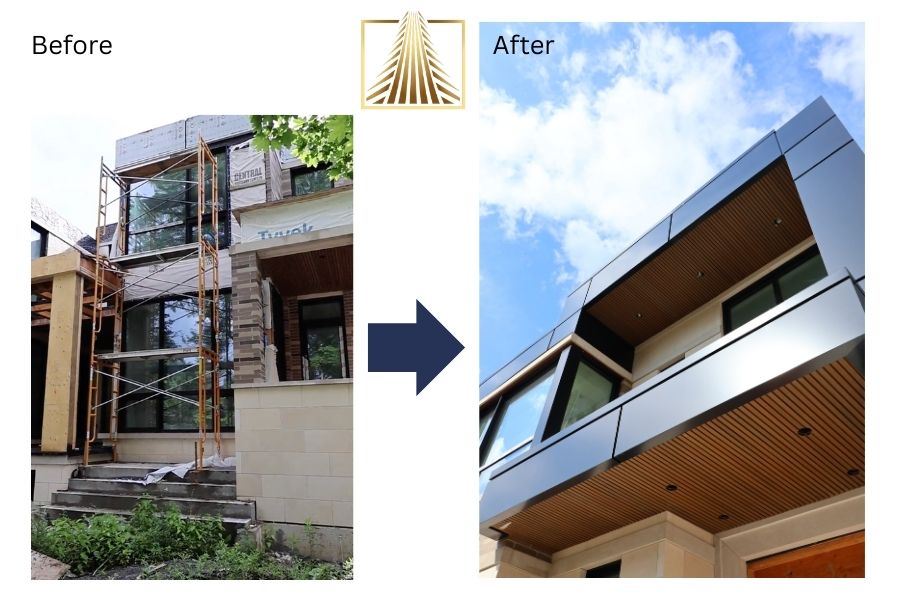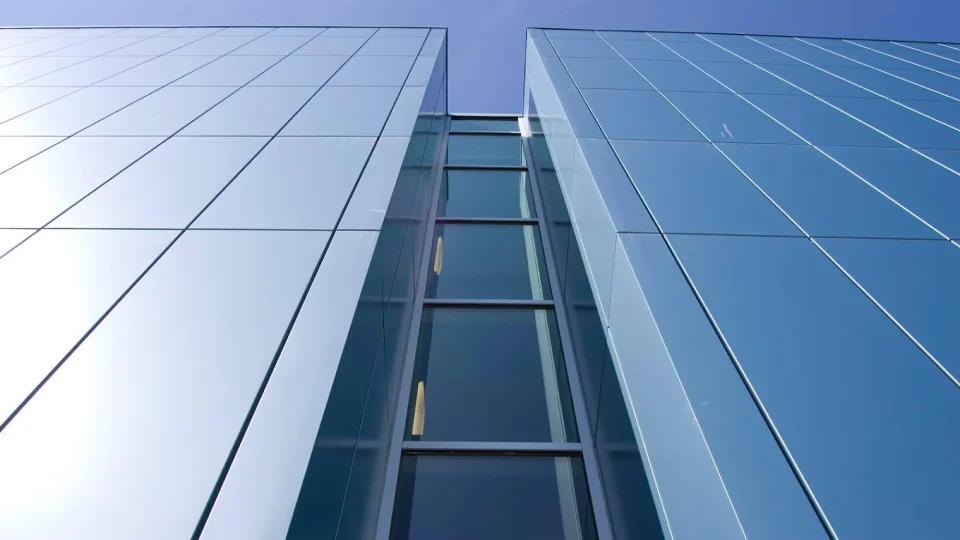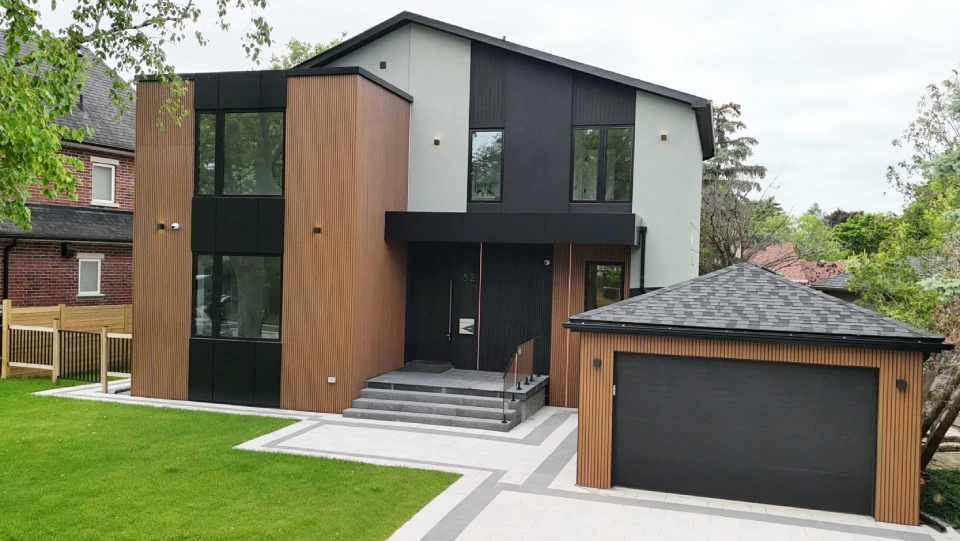Aluminum Composite Materials (ACM) have become an essential part of modern construction, offering architects and builders a versatile and durable option for various projects. ACM, also known as aluminum composite panels, is made by bonding two thin layers of aluminum with a non-aluminum core, creating a lightweight yet strong material. From sleek skyscrapers to eye-catching signage, ACM is everywhere, and its popularity is only growing. But what makes this material so special?
ACM panels are sandwich-like structures made up of two outer layers of aluminum and a core material, which is often made from polyethylene or fire-resistant materials. These panels are renowned for their strength, flexibility, and ability to withstand harsh environmental conditions. Thanks to their aesthetic appeal and structural advantages, ACM panels have become a go-to option for architects and designers worldwide.
What Are Aluminum Composite Material Panels?
You’ve likely seen ACM panels cladding the exteriors of buildings, creating smooth, modern facades. They’re also used for interior design, particularly in commercial spaces, where a clean, polished look is desired.

ACM Layers
One of the key features of ACM panels is their layered construction. The outer aluminum layers provide protection against weather and UV damage, while the core adds insulation and rigidity. Depending on the application, the core material can vary. For instance, some ACM panels use a polyethylene core for lightweight applications, while others incorporate fire-resistant materials for added safety in high-risk areas.
This combination of layers ensures that ACM panels are not only aesthetically pleasing but also highly functional. The choice of core material can impact both the safety and performance of the panels, making it a critical consideration during the design and selection process.
Benefits and Advantages of ACM
Why are ACM panels such a popular choice? Let’s break down some of the key benefits:
- Durability and Longevity: ACM panels are built to last. The aluminum layers resist corrosion, and the core materials are engineered to handle temperature fluctuations and moisture without degrading.
- Lightweight Properties: Despite their strength, ACM panels are incredibly lightweight, which makes them easier to transport and install. This lightweight nature also reduces the load on the building structure, which can be a significant advantage in large projects.
- Versatility in Design: ACM panels are available in a wide range of colors, finishes, and textures. Whether you’re aiming for a glossy, metallic look or a more subdued matte finish, ACM can be customized to fit any design vision.
ACM Applications
ACM panels are incredibly versatile and can be used in a variety of applications:
- Exterior Cladding: The most common use of ACM panels is in exterior cladding, where they help create sleek, modern building facades. ACM panels are favored for their ability to resist weathering, making them ideal for long-term use in outdoor environments.
- Interior Design Applications: In addition to their use on exteriors, ACM panels are also popular in interior design. Their clean, contemporary look makes them perfect for spaces like offices, shopping malls, and airports.
- Signage and Branding: Thanks to their smooth surface and customizable finishes, ACM panels are often used for signage and branding purposes. They offer a durable, weather-resistant option for outdoor signs that need to stand the test of time.
How Thick is ACM Wall?
When it comes to ACM panels, thickness can vary based on the specific application. Standard ACM panel thicknesses range from 3mm to 6mm. Thicker panels are typically used for exterior cladding, where added rigidity and insulation are required. Thinner panels may be used for interior applications where weight and flexibility are more important.
The choice of thickness will depend on factors such as the height of the building, environmental conditions, and the desired level of insulation. Thicker ACM panels offer better thermal insulation and soundproofing, making them a preferred option for high-rise buildings and other large structures.
Are ACM Panels Waterproof?
Yes, ACM panels are designed to be waterproof. The aluminum outer layers act as a protective shield, preventing water from penetrating the core. This makes ACM panels an excellent choice for exterior cladding in areas that experience heavy rainfall or high humidity.
However, proper installation is crucial to ensure that the panels remain waterproof. Seams and joints need to be sealed correctly to prevent water from entering behind the panels, which could cause damage to the building’s structure over time.
What Does ACM Cladding Look Like?
Aluminum composite material cladding offers a sleek, contemporary appearance that can be customized to fit a variety of design styles. Whether you’re going for a high-gloss, metallic look or a more subtle matte finish, ACM panels can be tailored to suit your project’s aesthetic needs.
One of the key advantages of ACM cladding is its ability to mimic more expensive materials. For example, ACM panels can be designed to resemble wood, stone, or metal, providing a high-end look without the associated costs or maintenance requirements.
Is Aluminum composite panel Safe?
The safety of construction materials is one of the most important factors that must be considered. In recent years, there has been a significant focus on the safety standards of ACM cladding, particularly in terms of fire resistance. While standard ACM panels with polyethylene cores have faced scrutiny for their flammability, newer engineered ACM panels with fire-resistant cores have been developed to meet stringent safety standards.
These fire-resistant ACM panels offer enhanced safety, especially in high-rise buildings where fire protection is critical. By choosing the right type of ACM panel, you can ensure that your building meets all relevant safety codes and regulations.
Eco-Friendly Aspects of ACM
In today’s eco-conscious world, the sustainability of materials is more important than ever. ACM panels score well in this regard, as they are fully recyclable. The aluminum layers can be melted down and reused, reducing the environmental impact of your project.
Additionally, ACM panels can contribute to the energy efficiency of a building by providing insulation and reducing the need for heating and cooling. This makes them a smart choice for green building projects looking to minimize their carbon footprint.
ACM Installation Process
Installing ACM panels requires precision and attention to detail. Here’s a brief overview of the process:
- Preparation: The surface must be clean and level to ensure proper adhesion of the panels.
- Framing: A framing system is installed to support the ACM panels.
- Panel Installation: The panels are mounted to the frame using fasteners or adhesives, depending on the specific application.
- Sealing: Joints and seams are sealed to prevent water infiltration.
Proper installation is key to ensuring the long-term performance of ACM panels. It’s important to work with experienced professionals who understand the nuances of ACM installation.
ACM vs. Other Cladding Materials
When comparing ACM to other cladding materials, it’s clear that ACM offers a unique blend of performance and aesthetics. Here’s how it stacks up against some common alternatives:
- Brick: While brick is durable, it’s also heavy and labor-intensive to install. ACM, on the other hand, is lightweight and can be installed more quickly.
- Wood: Wood offers a natural look but requires significant maintenance to prevent rot and weather damage. ACM panels can mimic the appearance of wood without the upkeep.
- Stone: Stone cladding is beautiful but expensive. ACM panels can replicate the look of stone at a fraction of the cost.
Maintaining ACM Panels
ACM panels are low-maintenance, but regular cleaning can help keep them looking their best. A simple wash with soap and water is usually enough to remove dirt and debris. For stubborn stains, a mild detergent or specialized cleaner may be required.
By keeping your ACM panels clean and addressing any damage promptly, you can extend their lifespan and maintain their appearance for years to come.
ACM Market Trends and Growth
The global Aluminum Composite Panel (ACP) market is experiencing steady expansion. In 2024, the market size was valued at approximately USD 6.47 billion and is projected to reach nearly USD 9.65 billion by 2030, growing at a CAGR of around 7%. Longer-term forecasts suggest the industry could expand even further, reaching USD 12.82 billion by 2034. This growth is primarily driven by rapid urbanization, increased demand for lightweight and durable construction materials, and the global shift toward sustainable building practices.
The Future of ACM in Construction
As construction trends continue to evolve, ACM panels are poised to play a significant role in the future of architecture. With a growing emphasis on sustainability and energy efficiency, ACM’s lightweight, recyclable properties make it an attractive option for green building projects.
In addition, advances in manufacturing are leading to even more design possibilities for ACM panels. From 3D textures to advanced coatings, the future of ACM is looking bright.
The Role of Wallcent
Wallcent has established itself as a top-tier provider of aluminum composite panels, recognized for its outstanding quality and craftsmanship. With years of experience in ACM panel production, they have built a strong track record of excellence in the industry. Wallcent’s panels are not only designed to meet rigorous standards but also installed by a team of highly skilled specialists. Their attention to detail and commitment to delivering superior results have made them a trusted name in both large commercial projects and smaller installations, setting a new benchmark for quality and professionalism in the ACM market. So if you are searching for best ACM panel manufacturer in Canada, call us.
Conclusion
Aluminum Composite Materials have transformed the world of architecture and design, offering a combination of strength, flexibility, and aesthetic appeal. Whether you’re building a modern skyscraper or designing a sleek interior space, ACM panels provide a versatile and durable solution that can meet a wide range of needs.


